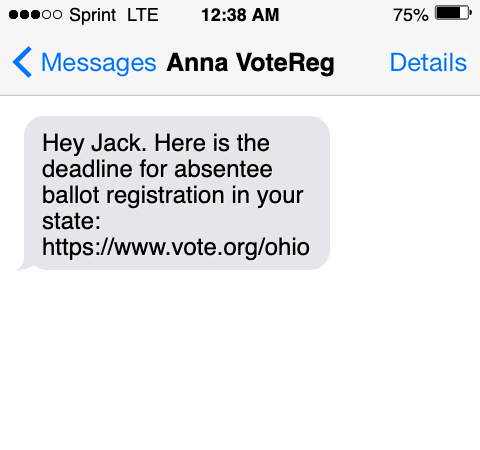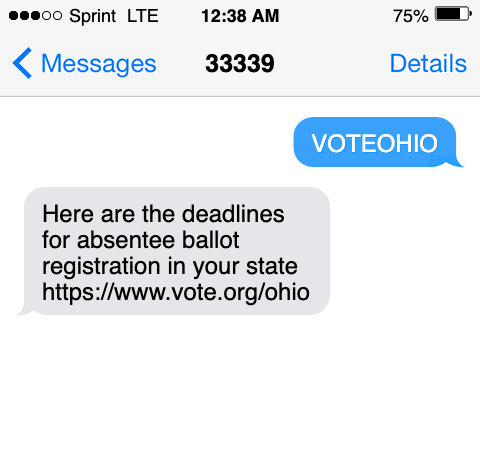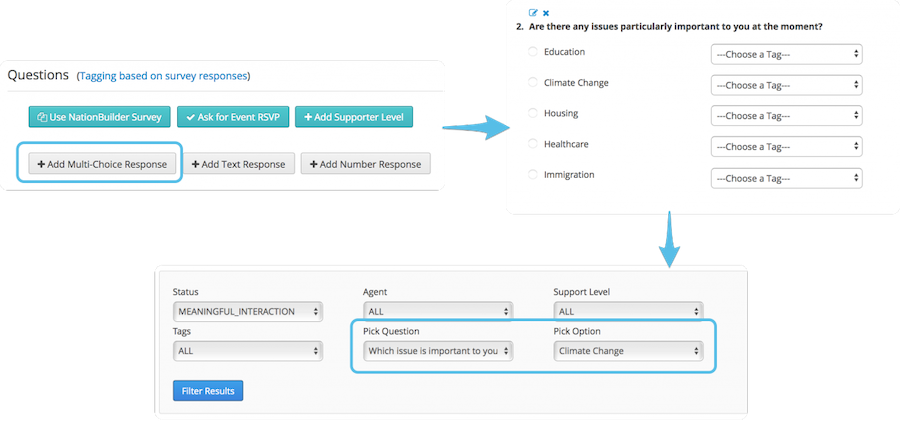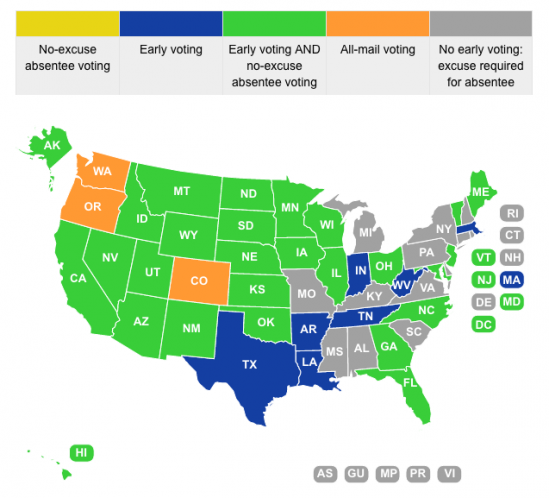Table of Contents
Absentee ballot chase is increasingly important for political campaigns to cover. In the 2018 midterm elections, 40% of voters used alternative methods like absentee and mail-in voting. A substantial number, but still less than half.
For elections in 2020, it’s clear that the majority of ballots will be absentee.
There has been a rapid upheaval in the way American voters will cast their ballots – namely, due to the coronavirus pandemic.
In a matter of months, you may have been forced to rethink what it means to mobilize voters and get them out to vote.
Ballot Chasing: Ballot chasing involves employing a collection of methods to make sure voters register and send in ballots. It often means repeated contact with voters to keep them informed about alternative voting methods and deadlines in their states.
Are campaigns and voters prepared to handle the shift?
Some campaigns and organizations started adapting early and got into the absentee ballot chase, and there’s a lot we can learn from them:
For overseas voters, absentee voting is the only way to have a say in the election process. That means it’s vital for them to be kept informed.
Democrats Abroad established a process to make it easier for these voters to register and cast their ballots.
In 2018, they ran phone banking campaigns to help overseas voters in over 190 countries request, receive, and return their ballots via mail. Their efforts drove 50-70% of the overseas absentee votes in the midterm elections.

What can Democrats Abroad teach us about creating an effective vote-by-mail strategy?
In order to effectively chase absentee ballots, especially in a time like this, you must:
- Find meaningful ways to engage voters who you can’t meet in person
- Understand individual voter preferences and collect ballot information relevant to each target voter
- Adapt your GOTV efforts around absentee voting
Let’s dig deeper into some of the strategies that Democrats Abroad put into play:
The tools you need for the job
Phone calls
Phone calls are the most effective way to inform voters about ballot procedures and deadlines.
A 2013 study conducted in Washington state found that ballot chase phone calls increased turnout among Latino voters by 1.6%. Among voters who only vote in Presidential elections, the increase in turnout was 5.7%
Read Also: Why You Must Include Mail-In Ballots in Your Next Campaign
How do you use phone calls?
In a normal campaign, phone calls are used to identify and clean voter lists, and to get them out the vote.
For an absentee ballot chasing campaign, the objectives are the same but are oriented towards absentee and mail-in voting rather than in-person voting
Regardless of what kind of calling campaign you’re running, ask yourself:
- Does the calling tool connect with my voter database?
- How do I ensure I’m only talking to people who want help? (for some, just the reminder call would be enough)
- Since volunteers are working from home, how do I keep them motivated?
- Should I focus my calling operations on single-member households?
Building a calling script for ballot chasing
You’ll need to alter the standard GOTV script for absentee voting.
The initial stages of GOTV should focus on alerting voters to register for/request ballots.
Latter outreach should focus on making sure voters return their filled ballots on time.
Here’s a sample ballot chase script you can build on:
| Hello, May I speak to <name> *Introduce your campaign and objective* Have you requested a ballot this year? If NO *Let them know the procedure for requesting an absentee ballot in their state* *Inform them about deadlines for ballot requests and submission* *Ask them to verify their details in your voter base* If YES *Ask them to check with their Local Election Official if they have received their ballot request* *Inform them about deadlines for ballot submission* *Ask them to verify their details in your voter base* Ask if they need dedicated help requesting or submitting a ballot Collect their mobile number if you don’t have it (If they are open to receiving text messages) Send a follow up text with a relevant link (to register for a ballot/deadline information) Update relevant survey responses on your calling tool to help target future outreach. End the call. |
Skip ahead for the most important data points to collect from your voter list on a call.
Increasing the chances of successful calling outreach
Making sure you get the results you want from your absentee ballot chase outreach involves several things.
Targeted outreach: Your follow-up calls should not be repeats of what’s been said before. If a voter has already verified with you that they have requested their ballots, asking them again might turn them off.
Avoid this by marking their status after a call in a survey field.
Here’s an example survey field from a calling campaign:

Make it easy to take action: Show them how they can do what you request of them on a call (for example, requesting a ballot)l. Give them the relevant links and procedures for ballot request and submission,
Learn more about organizing a political phone bank in our phone banking guide.
Text messages
Turnout increased by 8% among registered voters aged 27 – 42 contacted using peer-to-peer texts.
Data from multiple field studies show that texting significantly increases turnout among younger demographics.
This is because texting has the advantage of being a more familiar mode of communication. Therefore, you must consider this form of communication for your absentee ballot chase.
How do you use text messages?
Use your texts for specific outreach, instead of just generic broadcasts.
Text messages that include ballot information, polling place location, and/or information on identification required at the polls are more effective at getting people to the polls than texts that just remind people to vote.
You can use text messaging to:
Share a ballot application link after a phone call.
Set up a templated follow-up text message that agents can send right after their call with a voter.

Send text message reminders before the deadline for registration/ballot submission.
The immediacy of mass text messages lends it some advantages in use cases where you need to send urgent messages to voters.

Have agents share resources with voters
Peer-to-peer texting allows for more personalized messaging. Texting volunteers can have scalable 1-to-1 conversations with voters. This allows them to troubleshoot for voters during the registration process.

Send targeted information
Ask contacts to send a keyword to a shortcode to get the voter registration link for a particular state.

How can you send absentee ballot chase text messages?
The only practical option for texting voters is to use a text messaging tool.
You have the following outreach options:
Text broadcasts: A text message goes out to your entire voter list at the click of a button.
Peer-to-peer texting: Texting agents manually send text messages to contacts and manage responses. This allows for conversations with voters through text.
Opt-in texting: Ask voters to send in a keyword to a short code to be added to your contact list or receive a specific response.
Learn more about texting for your campaigns.
Social media
While targeted messaging to get information around absentee ballot chase and mail-in voting to your contact list is important, so is spreading general awareness among supporters.
Have a social media schedule for absentee ballots.
Push updates:
- When registration for ballots is open
- Regularly throughout the registration period
- To promote organizations that are helping voters get registered, like NAACP, ACLU, BallotReady, DemocracyWorks, APIA Vote, I am a Voter, Vote Early Day, and National Voter Registration Day.
- When deadlines for ballots requests and submissions are approaching
- When policy changes for absentee and mail-in ballots occur
Key Takeaway:
Communicate your GOTV goal to voters. Every outreach campaign (ballot registration/ballot submission) should involve you communicating what action you want from your contact (with a step-by-step walkthrough if necessary), so they are in no doubt over what they must do. The tweet highlighted above is a good example of that.
Data needed before starting a GOTV campaign
Voter list with location data/ballot registration status
Democrats Abroad agents use surveys during calls to collect details of voting status (registered to vote, received ballot, sent ballot) and future communication preferences (email follow-up, personal follow-up, GOTV reminder, do not contact)
You need to collect data from your voter base to facilitate further communication with them.
Collect or verify the address details of your contacts. Most importantly, you need their:
- City
- State
- Zip Code
In order to send targeted ballot information based on a voter location, segment your lists based on this data, and run separate outreach campaigns.
Here’s how segmenting contacts based on survey responses work in a tool like CallHub:

Here are some questions to answer through voter surveys:
- Has the voter submitted a ballot request?
If NO, send follow-up outreach to remind voters to do so, if YES, you can skip these contacts for future registration reminder outreach.
- What is the best way to reach them in the future?
If they want to be reached through texts or emails instead of phone calls, this information will help.
- Do they need help requesting/submitting a ballot?
You can target these individuals with a follow-up campaign.
- Are their address and contact details up to date?
Agents can update that data in their interface on a call.
Key takeaway:
Segment voters for targeted messaging. Once you’re close to the election, you need to focus on voters who have gotten their ballots and are ready to submit them. Run state-specific campaigns by segmenting voters based on their address.
Data collection during your initial outreach can help you segment these voters for GOTV calls and texts.
Take note of Absentee/mail-in ballot registration + submission deadlines
This is the data that needs to be communicated with your voter base so that they can cast votes in Presidential, Senate, House, and local down-ballot elections.
Voting methods on a state by state basis
Refer to this image on how each state conducts alternative voting:

What do these terms mean?
No excuse absentee voting:
Any voter can request a mail ballot without providing an excuse
Excuse required:
Some states require voters to provide a valid excuse to vote absentee/by mail
All-mail voting:
In these states, voting is conducted primarily, but not necessarily, by mail
Early voting:
Ballots can be cast prior to Election Day at a designated location The voting equipment used during early voting is the same as the equipment used on Election Day.
Because of the circumstances, states may change some of these practices to make absentee ballot chase/mail-in voting easier in the lead-up to the election. It’s important to keep yourself and voters updated.
For example, Arkansas Gov. Asa Hutchinson announced that voters in the November 3, 2020, general election would be allowed to cite concerns over COVID-19 as a valid excuse for voting absentee. Hutchinson subsequently issued an executive order formalizing this policy change.
Registration and submission deadlines
You will need to keep voters informed about registration details and deadlines in their states.
There are several important aspects of the application process to consider in evaluating a state’s ease of access to a mail-in and absentee ballot.
The main concerns are:
- Is an application required per election or does a statewide application exist?
- Can an application be made at the point of registration? Is an online application method available to voters?
- Who can apply in-person for a mail ballot, especially on another’s behalf?
- What kind of identification will voters need?
Voting Rights Advocate and Writer, Maya Contreras has compiled information on voter registration deadlines for every state in an easy-to-consume format:
Link out to similar resources to voters during outreach, or send them specific information for their states. You can link to sites like Vote.org. where they can register for ballots to make your absentee ballot chase easier.
You can also consider partnering with these sites to provide specialized help for your voter base. Companies like NBA and Snapchat are teaming up with platforms such as BallotReady to help voters register for mail-in ballots.
Here’s is a form on the NBA’s website encouraging people to register to vote:

Regardless of deadlines, it is important to note that the U.S. Postal Service has advised that all ballots be mailed in October, well in advance of the November 3 election. Reason being, the predicted load on postal services closer to the election.
Key takeaway:
Make sure voters have all the information they need to successfully register and cast their vote. In addition to communicating relevant information, be available for your voters if they want to reach out to you with specific asks. (a dedicated email address or phone number helps)
The GOTV time frame for Ballot chasing
It’s important to start earlier than you would an average GOTV campaign, in order to account for the time it may take to receive and submit a ballot application.
Vote at Home has compiled a doc with the earliest possible dates that voters can apply to vote by mail-in or absentee ballot, along with the ease of various application processes.
If you are reaching out to voters who have already applied for a ballot, and asking them to submit their ballots, the best time frame is around 2-3 weeks before election day.
Note that while contact rates are higher the earlier you make your calls, calls that are made close to election day generally work better to increase turnout.
Our GOTV guide helps you lay out a plan for voter outreach.
Key takeaway:
Contact them frequently. Studies show that the impact of GOTV outreach increases up to 5 contacts and diminishes with 6 or more contacts.
Ballot chase messaging – What should you say?
As we saw earlier, more than half the people voting in 2018 did so in person. They may not be aware of the nuances regarding alternative voting methods such as early and absentee voting.
Help them make a plan
Voters who are asked to take a pledge to vote and taken through the voting process voted at a rate 4% higher than those who aren’t.
This is exponentially important when unfamiliarity with alternative voting processes comes into play.
Help your voters create a voting plan, by asking them to answer questions such as:
- How do you plan to request a ballot? (email, mail?)
- When do you plan to submit your ballot?
Be flexible in your messaging
Be it phone calls or peer-to-peer texts, you want the conversations that your agents and volunteers have to be natural.
Your script should serve as a guideline, but your volunteers should be able to convey your message in their own words.
No matter what approach they use, make sure these details are communicated to voters:
- The available voting methods for their state
- The best time to submit their absentee ballots
- Reminders when deadlines are in sight
You can use templated responses in the case of peer-to-peer texting to help you with this:

Using social and peer pressure
This is a tactic that is proven effective in GOTV campaigns. For voters who are not used to absentee or mail-in voting, showing them that fellow constituents are doing so can help push them to cast their ballots.
If you have the bandwidth to ask someone from a voters personal network to help keep them accountable, that’s even better.
Testing your messaging
While certain tactics are proven to work, it’s always good to try out different variations in your messaging and find what suits your specific audience.
Determine the nature of your audience and set a tone for your messages through testing—for example, the performance of a rational appeal vs an emotional one.
Take a more in-depth look at how you can craft your messaging for GOTV in our strategy guide.
Key takeaway:
As a general rule for your ballot chase initiative, it is important to be polite and respectful.
GOTV involves repeated communication with contacts. Since the frequency of your outreach is going to be high, it is important that voters are not turned off by your calls and texts. If they do not wish to be contacted again, make sure they are removed from your lists.
A rapid shift to mail-in and absentee voting can in turn lead to apathy among voters. Avoid that by making the voting process as easy as possible for them through your ballot-chasing strategy.
As we discussed, adopting a plan for absentee and mail-in voting is not too different than your regular GOTV campaign.
- The first thing you can do is to adopt voter communications tools that can help you get the job done. Door-to-door canvassing, while effective, is ill-advised at the moment.
- Next, collect the data you need from your voter base and from external sources that will make it as easy as possible to move voters from requesting ballots to submitting them.
- Finally, Adapt your GOTV time frame and messaging for absentee ballots.
Calling and texting are invaluable for ballot chasing. If you’re looking for the tools to get started, try out CallHub for free.
Democrats Abroad and Bernie 2020 have been using CallHubs communication tools for voter outreach and data collection.

